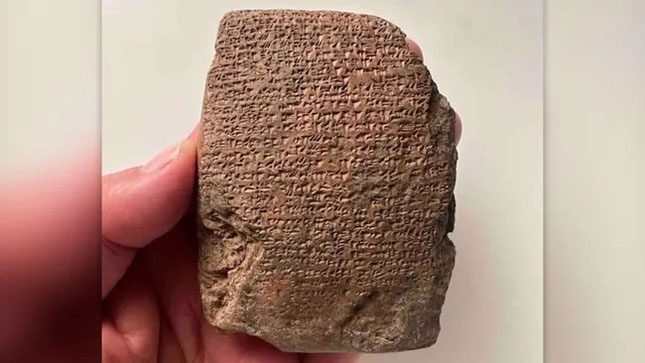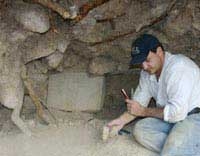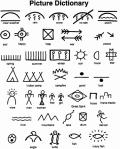Researchers believe that the sacred language inscribed in hieroglyphs on a newly discovered tablet indicates that a Hittite king visited or resided at the site where the tablet was found in Turkey.
This is a 3,300-year-old clay tablet located in central Turkey that describes the catastrophic foreign invasion of the Hittite Empire, a mysterious state from the Bronze Age. The invasion occurred during a Hittite civil war, supporting one of the warring factions, according to the translation of the hieroglyphic text on the tablet.

The ancient tablet inscribed with hieroglyphs in both Hittite and Hurrian languages. (Photo: Kimiyoshi Matsumura, Japanese Institute of Anatolian Archaeology).
This palm-sized tablet was discovered by Kimiyoshi Matsumura, an archaeologist at the Japanese Institute of Anatolian Archaeology, in May 2023, among Hittite ruins at Büklükale, approximately 60 km southeast of Turkey’s capital Ankara.
Archaeologists believe that Büklükale was a major city of the Hittites. The new findings suggest that this was also a royal residence, possibly comparable to the royal residence in the Hittite capital of Hattusa, located about 112 km northeast.
According to Mark Weeden, an associate professor of ancient Near Eastern languages at University College London, the first six lines of hieroglyphic text on the tablet, written in Hittite, state: “Four cities, including the capital Hattusa, are in disaster,” while the remaining 64 lines consist of a Hurrian prayer pleading for victory.
The Hittites used the Hurrian language for religious ceremonies. It appears that this tablet records a sacred ritual conducted by a Hittite king.
Bronze Age Empire
Archaeologists suggest that the Hittite kingdom first emerged in central Anatolia—now Turkey—around 2100 BC and that the Hittites became a major power in the region by 1450 BC.
The Hittites are mentioned in the Hebrew Bible and in ancient Egyptian inscriptions, which record that the Hittite Empire fought against them in 1274 BC at the Battle of Kadesh—an ancient city near present-day Homs, Syria—one of the earliest battles recorded in history.
The Hurrian language was originally the language of the Mitanni kingdom in the region, which eventually became a vassal state of the Hittites. Matsumura noted that this language remains not fully understood, and experts have spent months trying to interpret the meaning of the inscriptions.
It turns out that the writing of the Hurrians is a prayer addressed to Teshub, the Hurrian name for the storm god, who is considered the chief deity of both Hittite and Hurrian gods. He stated that it praises the god and his divine ancestors while continuously referencing the communication between gods and humans.
Civil War
The Hittite Empire disappeared from history in the early 12th century BC. This coincided with the collapse of the late Bronze Age, during which many ancient civilizations around the Mediterranean fell into turmoil.
As historian Eric Cline described in his book “1177 B.C.: The Year Civilization Collapsed” (Princeton University Press, 2014), the causes of this collapse remain unknown, but they may include drought due to climate change.
However, this invasion does not appear to be related to the conflict mentioned on the tablet. Matsumura noted that this stone tablet dates back to the reign of Hittite king Tudhaliya II, around 1380 to 1370 BC—approximately 200 years before the collapse of the late Bronze Age.





















































